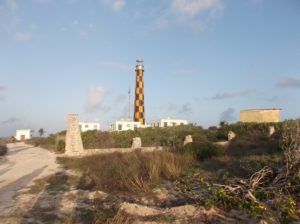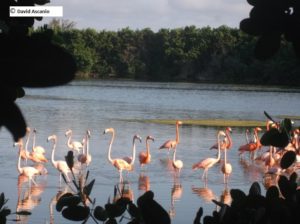Locale: Cuba is the largest island in the Caribbean, with a land mass of a little over 42,000 square miles and about 3,500 miles of coastline. The main island is 780 miles long and 119 miles across at its widest point, 19 miles across at its narrowest. Today we traveled from the north shore to the south. Administratively, Cuba is divided into fifteen provinces; we’ve now been to three of the fifteen (we will not visit the five eastern ones, which include Guantánamo, probably the place name most familiar to Americans).
Weather: 70s. Cold front with drizzle.
Itinerary: Cayo Coco south to Morón, south to Ciego de Ávila, west on Carretera Central to Jatbonico, west to Sancti Spíritus, southwest to Trinidad
Overnight: Hotel Las Brisas, Ancón Peninsula
Excursions: Birding at Cueva del Jabalí, buffet breakfast at hotel, birding on Cayo Coco near Hotel Tryp, lunch at hotel bar, long bus ride to Ancón Peninsula, check in at hotel, dinner at paladar Davimart
Habitats: Desert scrub, farmland, mangroves, urban areas.
Bird Species (partial listing, by family): Least Grebe (Tachybaptus dominicus), White-Crowned Pigeon (Patagioenas leucocephala), Key West Quail Dove (Geotrygon chrysia), Clapper Rail (Rallus crepitans), Long-billed Dowitcher (Limnodromus scolopaceus), Solitary Sandpiper (Tringa solitaria), Lesser Yellowlegs (Tringa flavipes), Yellow-Crowned Night Heron (Nyctanassa violacea), White Ibis (Eudocimus albus), Cuban Tody (Todus multicolor), Crested Caracara (Caracara cheriway), Cuban Vireo (Vireo gundlachii), Cuban Crow (Corvus nasicus), Red-Legged Thrush (Turdus plumbeus), Cape May Warbler (Setophaga tigrina), Palm Warbler (Setophaga palmarum), Oriente Warbler (Teretistris fornsi)
Other Species: Blue-Headed Anole (Anolis allisoni) and Knight’s Anole (Anolis equestris cyaneus)
Guides and Driver: Angel, David, Liu and Carlos
Observations: Supposedly, the “Cave of the Wild Boar” is a trendy disco!
The mini-pizza I ate for lunch at the bar was quite tasty (surprisingly, I suppose).
We are staying at yet another all-inclusive resort. Our room is on the second floor and quite nice; however, the water pressure disappeared, so I took a sponge bath instead of showering.
Our welcome drink at Davimart was made with miel (honey).
Reflections: The roads in Cuba seem to be in good shape — maybe even more so than our roads in Massachusetts, which at this point in the year are riddled with potholes from winter weather. Our bus is Chinese-made, by the Yutong Bus Company; we see many of these buses, which all look fairly new. Of course the American cars from the 1950s which we see everywhere are a Cuban phenomenon, and I have to say, they are quite the sight. We also see European cars, from French, Italian, and German manufacturers, as well as the Russian Ladas, and there are Japanese-made cars as well. It is difficult for individual Cubans to own their own automobiles, and horse-drawn vehicles are a common sight.
I have noticed quite a bit of trash by the roadsides though, and even on the beaches. Maybe as Cuba becomes more developed, we’ll start to see Earth Day clean-ups as we have in the States (certainly we Americans ought to do better, and think about recycling and waste more often than once a year).
Images:

I am not sure how to interpret these sculptures of cows outside our hotel room.

The beach is visible in the background, behind the pool.

Mangrove forests are an ecosystem of high biological diversity.

Semi-feral dogs are a common sight in Cuba.



